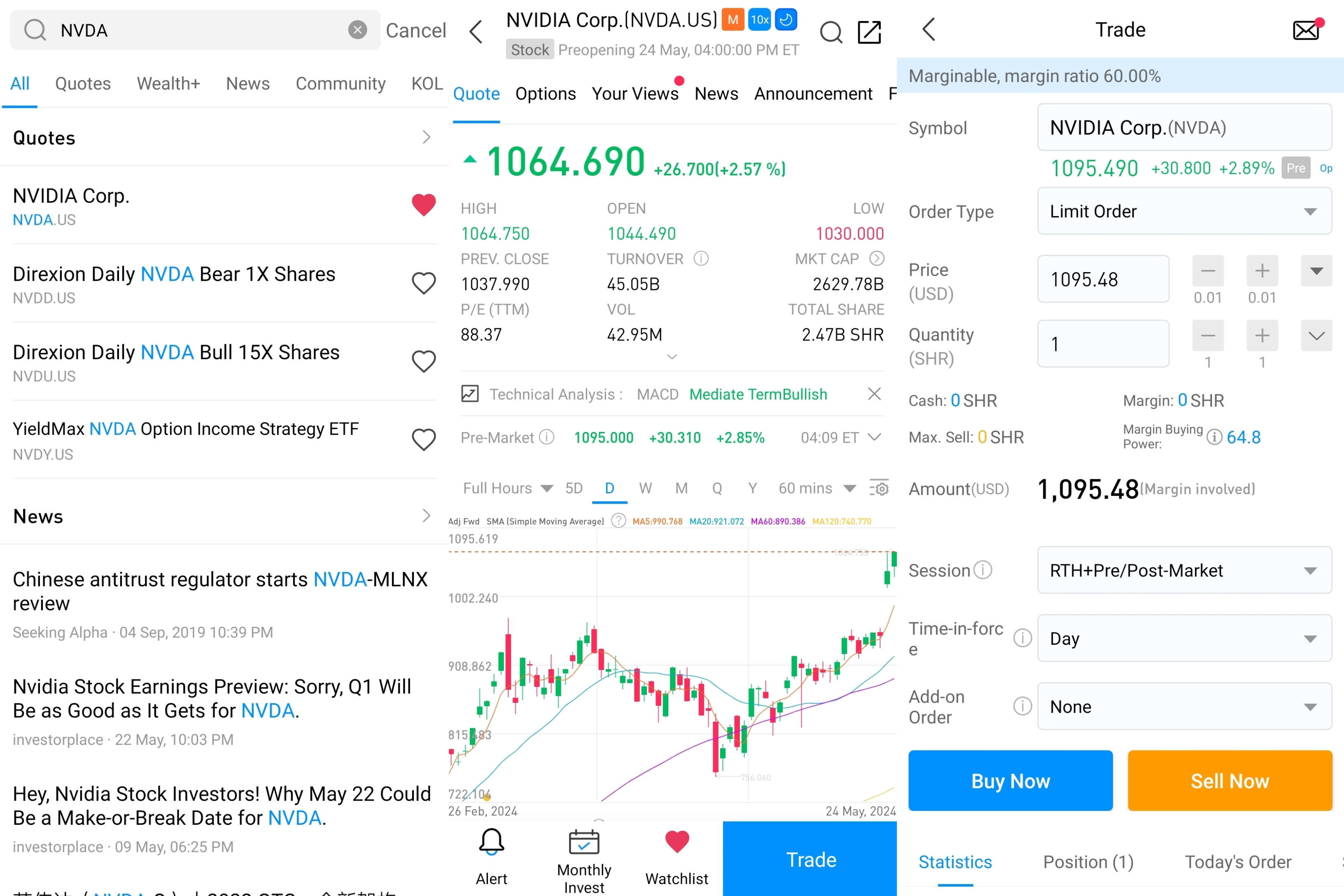NVIDIA's stock experienced a slight increase on the first trading day following the stock split, with its market value continuing to surpass Apple's.
According to the "Caixin" bi-weekly report, NVIDIA's "1-for-10" stock split began trading at the adjusted price on the 10th (last Friday's closing price was 1208.88,adjusted to120.88). Although the stock initially dipped after the opening, it closed up by 0.75%, reaching $121.79, influenced by the news that Wall Street investment banks had raised their target prices. As of the close on the 10th of this year, NVIDIA's stock price has risen nearly 146%.
On June 6th, NVIDIA's market capitalization surpassed $3 trillion, overtaking Apple to become the second largest company by market value in the US stock market. As of the market close on June 10th local time, Apple's market cap was $2.96 trillion, while NVIDIA's market cap remained above Apple's.
NVIDIA's shares rose 3.52% to a new all-time high, and its global discrete GPU market share reached 88% in Q1.
According to NASDAQ financial data, on June 14th, NVIDIA (NVDA.US) closed up 3.52% to a new record high, with a trading volume of $33.475 billion and a total market capitalization of $3.19 trillion. NVIDIA's global discrete GPU (AIB GPU) market share rose to 88% in the first quarter. According to the latest report from analysis firm Jon Peddie Research, global discrete GPU shipments declined from 9.5 million units in the previous quarter to 8.7 million units in Q1 2024, but increased 39% year-over-year. NVIDIA's market share climbed to a high of 88%, while AMD's GPU share fell to 12%, and Intel's GPU share was less than 1%.
After announcing a stock split, NVIDIA has surged over 27%!
One reason why stock splits can trigger stock price increases is that splits make it easier for retail investors to buy the shares. NVIDIA's previous stock split in 2021 led to its share price rising nearly 7 percentage points (from 17% to 23%). With increased retail trading activity following a split, the post-announcement returns also tend to be stronger.
Liquidity is also likely a factor. Data from Bank of America shows that stocks typically return 25% in the 12 months after a split, compared to 12% for the broader market index. While NVIDIA's past few performances may have been less than ideal, given its impressive run over the past year, traders expect NVIDIA's share price to rise further this time.
How to place a trade on uSMART mobile application
Log in to the uSMART HK APP, click on the "Search" icon at the top right corner of the screen, and enter the "NVDA" to access the details page for trading information and historical trends. Click the "Trade" button at the bottom right corner, select the "Buy/Sell" function, fill in the trading conditions, and submit the order. The visual guide is as follows:

This diagram is provided for illustrative purposes exclusively
Follow us
Find us on Twitter, Instagram, YouTube, and TikTok for frequent updates on all things investing.
Have a financial topic you would like to discuss? Head over to the uSMART Community to share your thoughts and insights about the market! Click the picture below to download and explore uSMART app!

Disclaimers
uSmart Securities Limited (“uSmart”) is based on its internal research and public third party information in preparation of this article. Although uSmart uses its best endeavours to ensure the content of this article is accurate, uSmart does not guarantee the accuracy, timeliness or completeness of the information of this article and is not responsible for any views/opinions/comments in this article. Opinions, forecasts and estimations reflect uSmart’s assessment as of the date of this article and are subject to change. uSmart has no obligation to notify you or anyone of any such changes. You must make independent analysis and judgment on any matters involved in this article. uSmart and any directors, officers, employees or agents of uSmart will not be liable for any loss or damage suffered by any person in reliance on any representation or omission in the content of this article. The content of this article is for reference only. It does not constitute an offer, solicitation, recommendation, opinion or guarantee of any securities, financial products or instruments.The content of the article is for reference only and does not constitute any offer, solicitation, recommendation, opinion or guarantee of any securities, virtual assets, financial products or instruments. Regulatory authorities may restrict the trading of virtual asset-related ETFs to only investors who meet specified requirements.
Investment involves risks and the value and income from securities may rise or fall. Past performance is not indicative of future performance.





